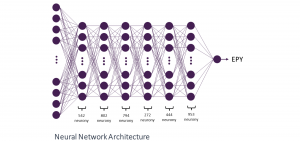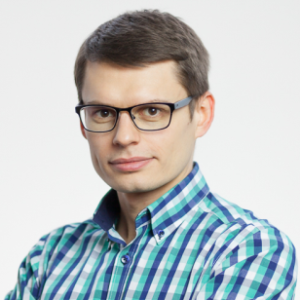At Interizon Day 2023 Waldemar Kołub co- founder of Inero Software presented a success story about using Neuronal Networks to optimize the production process.
 Farm Frites Poland is leading producer of potato products, supplying products to, among others, one of the largest fast-food restaurants in the world. The company has been operating for over 30 years, and its headquarters is located in Lębork. The modern machinery park consists of three production lines.It employs over 270 people, and the quantity of potatoes used for production over a year exceeds 250,000 tons.
Farm Frites Poland is leading producer of potato products, supplying products to, among others, one of the largest fast-food restaurants in the world. The company has been operating for over 30 years, and its headquarters is located in Lębork. The modern machinery park consists of three production lines.It employs over 270 people, and the quantity of potatoes used for production over a year exceeds 250,000 tons.
“The problem our client had was to estimate the production yield based on the parameters of the raw input material, so how much of the final product we can obtain from the given amount of the source material, or, to put it in layman’s terms, how much fries we can get from a potato. And it turns out that it is not an easy question to answer.” – Waldemar Korłub mentioned at his presentation.
Challenges for the development od the company was:
DATA OF THE RAW MATERIAL:
- Contracting for raw material supplies is planned several months in advance and constitutes a significant element of the enterprise’s manufacturing process and pricing policy.
- Estimation of yield, i.e., the difference between the weight of raw material and the final product expressed in percentages (EPY), allows for adjusting the raw material price to the expected result.
PRODUCTION OPTIMIZATION:
- Identification of raw material characteristics that most significantly affect the yield (EPY)?
- Indicate what yield can be expected based on the given raw material?
“So there are a lot of parameters that describe the source material. All in all, there are over 40 different physical traits that need to be taken into account that might influence the final. Yield with the set of parameters. We perform exploratory data analysis to find correlations between the parameters and the final results. By doing that, we are able to identify the parameters which influence the final results the most. Also, we looked for correlations between the parameters which allowed for dimensionality reduction in the problem space and, as a result, it allows for speeding up the machine learning process.”

Machine learning is method used for “feeding” machines with data so that based on this data and their own errors, they learn the rules to solve a given problem. It can be assumed that this is a role reversal, where previously, by defining the rules and utilizing the data, we sought answers.
“With a well-defined set of parameters, we could move on to model research. We’ve tested several different machine learning approaches, including regression models, decision trees, support vector machines, and neural networks. In the end, it turned out that the best results were achieved with neural networks, with the mean error at around 1.2% for the validation data.“
LEARNING
Learning is based on providing training examples (historical data) in the form of:
- Average raw material per run: Green, Rusty, OWG, Color (actual values)
- Average yield per run: EPY (e.g., 45%)
The network minimizes the error between the actual value of EPY (45%) and what it predicts itself (e.g., 54%). The metric used is MSE (Mean Squared Error).
IMPLEMENTATION AND VALIDATION
The model was implemented in the client’s infrastructure. Thanks to the introduction of the solution, it was possible to minimize the forecast error to just 3%. This means that accurate estimates can already be made at the stage of contracting raw material supplies.
“This preliminary model research was conducted on a subset of the dataset, and the model that was decided to be the best was later on deployed in our client’s infrastructure and we performed the full training using the complete set of production data from historical production runs. The final model was deployed to production with the mean squared error below 3% for the real-world production runs.”

This solution was developed according to our build, operate, transfer model. “We build the solution using our knowledge and expertise in the first step. Then we helped with setting up the infrastructure and the processes to meet the operational requirements, and finally, the product was transferred to the client, who receives the full ownership of the solution. With this process, we are not only trying to create solutions for individual problems but rather to create a platform for the ongoing development of innovations in the environment of our clients.”
At Inero Software, we believe that software goes beyond just the technical; it’s also about people, business, and delivering on sustainable long-term objectives. By leveraging the BOT model, we establish a lasting innovation framework within our client’s operations, enabling them to set and achieve long-term business goals through the power of innovation.

Waldemar Korłub, Eng. PhD
CO-FOUNDER INERO SOFTWARE



